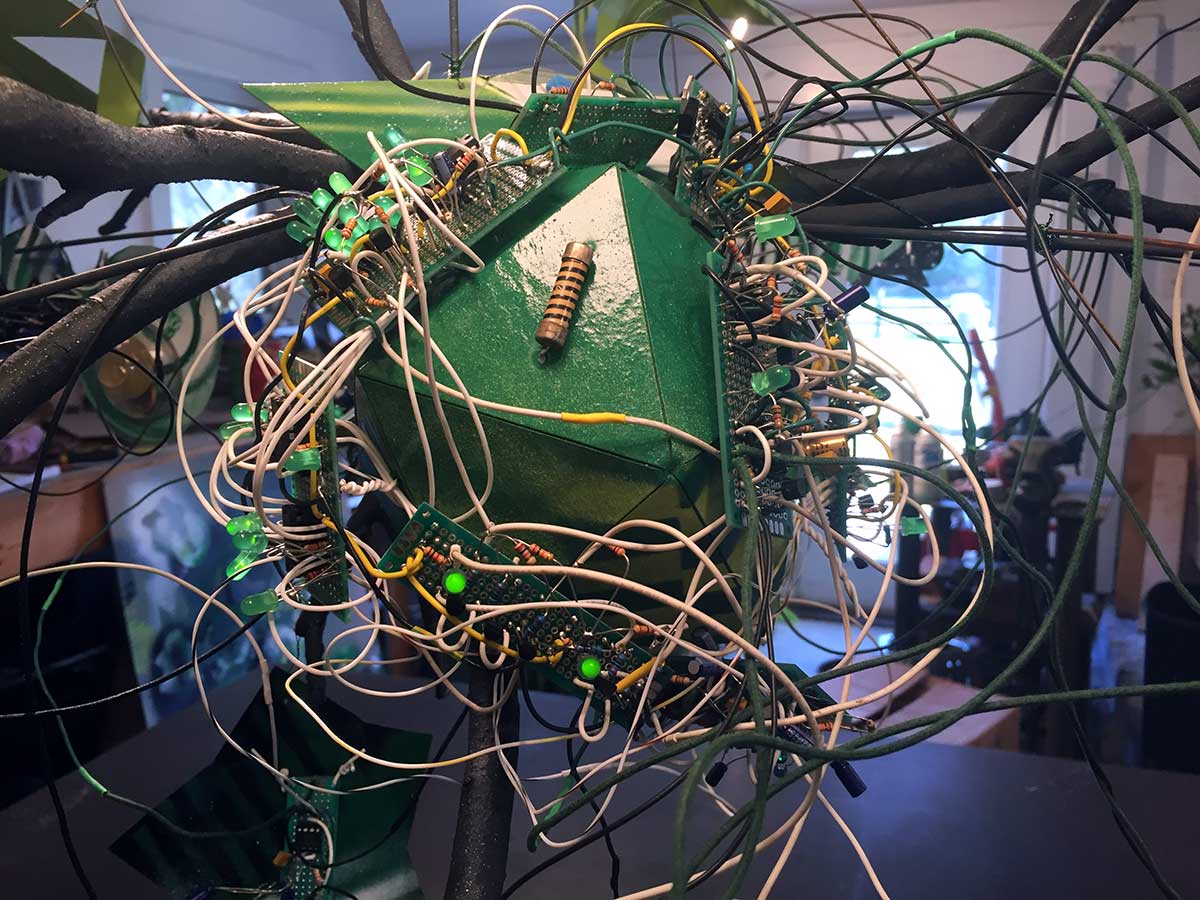I've been working around the clock to finish my Hackaday Prize application and pack for Hacking Nature's Musicians in Mexico. As closure for my recent chapter, the various circuits that I've shown you over the past few weeks have migrated from my bench and into a sculpture titled "Electrolier (September night in Virginia)," 2018. Here is an informal video:
The video quality isn't great... (shot with my iPhone under bad lighting and extremely messy studio)... but hopefully you get the idea. The sculpture contains one instance of my Mother Nature board design, recognizable by the dense tangle of white wires connecting logic gates, and six sound generating "animal circuits" each with its own speaker. The colorful graphics are spray painted cardboard, and everything is hung on a tree structure under a moon (globe pendant bulb). Oh, and that large moth is made out of silk velvet that I dyed and embroidered with an old industrial "Ultramatic" machine. I would have used small molex-style connectors to connect everything, but there was no time.
It's interesting that so many long wires didn't screw up my signals. I credit this to my use of common emitter amplifiers to buffer the signals, and the fact that I'm not drawing much current for anything you see (or hear). The whole sculpture is powered with a 12VDC / 1.5 amp power supply. I also used multiple 0.1 uF ceramic capacitors between power and ground on most of the individual perfboards. It's critical to remember power-ground capacitors when you're dealing with a lot of amplified signals banging on your power rails. I'm careful to avoid really small gauge wire, and I add many pathways to ground ("let ground abound.")
So... now I am packing my electronics bench into a suitcase and praying that security does not detain me at the airport. I'm throwing in packets of desiccant and crossing my fingers that jungle humidity doesn't zap everything. Making analog electronic circuits in the jungle will be interesting to say the least -- stay tuned for the sounds of los músicos de la naturaleza en Quintana Roo!










